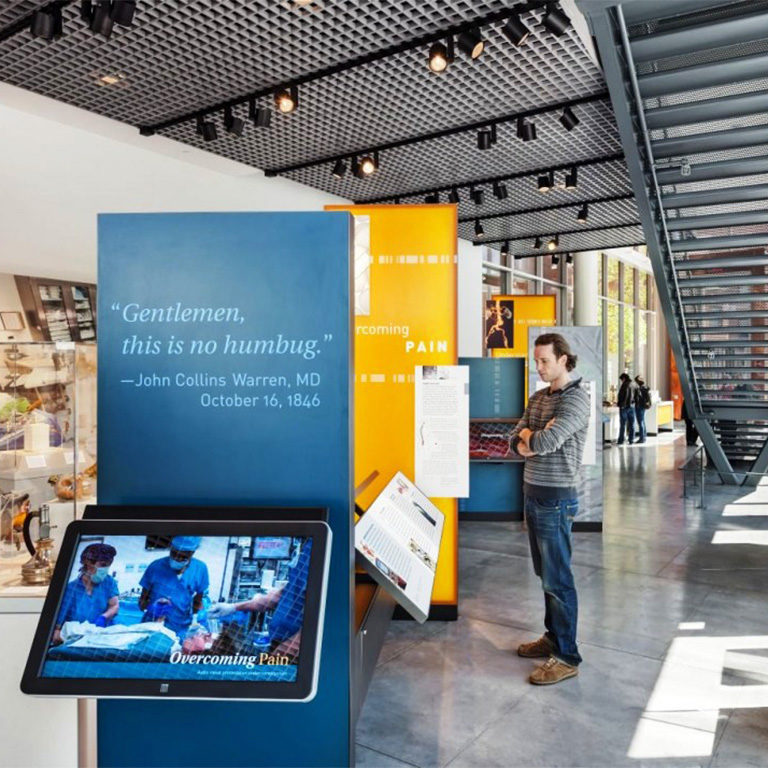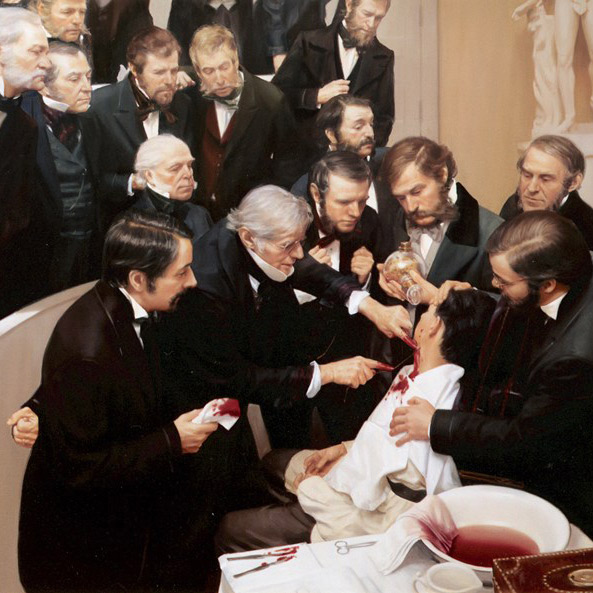About the HOSPITAL
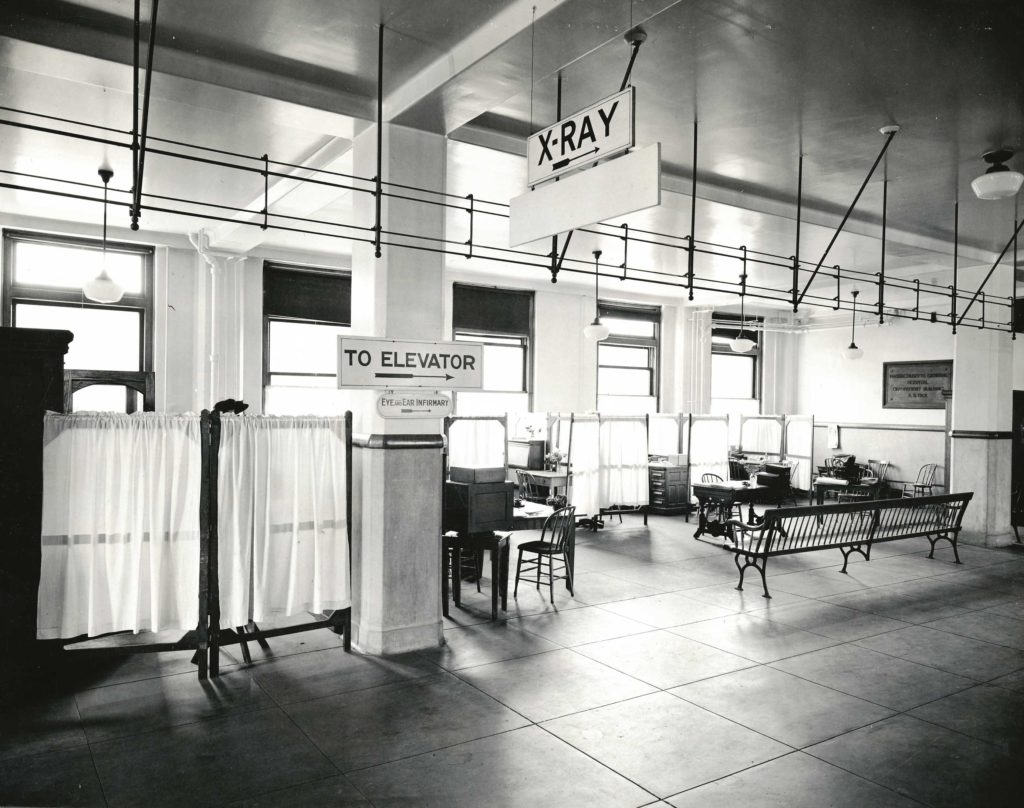
Massachusetts General Hospital was established in 1811 to serve Boston’s general public. At that time, the sickest and most vulnerable patients were cared for in almshouses, while the wealthy could afford private care at home. Creating a general hospital was an innovative idea.
Since its inception more than 200 years ago, MGH has remained at the forefront of medicine by fostering a culture of innovation. The hospital continues to conduct groundbreaking research, educate health care professionals from around the world and, most importantly, improve the quality of clinical care provided to all members of its community.
The Paul S. Russell, MD Museum of Medical History and Innovation tells the rich story of MGH through interactive media displays, artifacts and photographs. Visitors can learn about the hospital’s important contributions to the medical field and see how these discoveries and advancements have shaped the present and how the hospital can continue to shape the future of medicine.
The Russell Museum is dedicated to drawing connections between innovations spanning more than 200 years, from the hospital’s charter in 1811 to the present day. Visit us for an experience that will inform, inspire and engage.
Innovation from 1811 to the Present
In 1810, the United States could boast only two general hospitals, Pennsylvania Hospital (founded in 1756) and New York Hospital (1791). Locally, the marine hospital in Charlestown tended to the needs of sailors, and the Boston Dispensary addressed the ambulatory care of paupers, but no New England facility in the early 19th century provided medical care to members of the general public. Rev. John Bartlett, chaplain of the almshouse in Boston, dreamed of establishing a hospital that would make state-of-the-art medical care available to the physically or mentally ill while affording improved opportunities for practical medical education. He joined with like-minded doctors and leading citizens to organize a fundraising campaign.

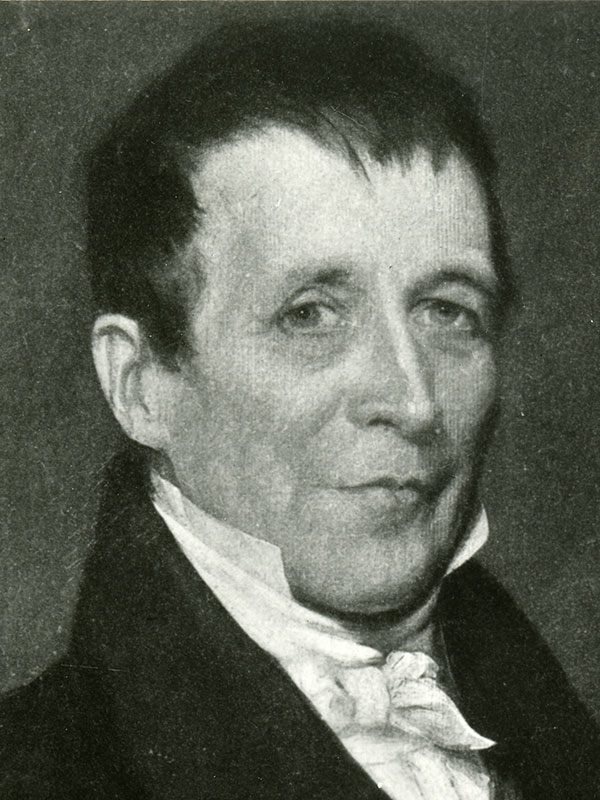
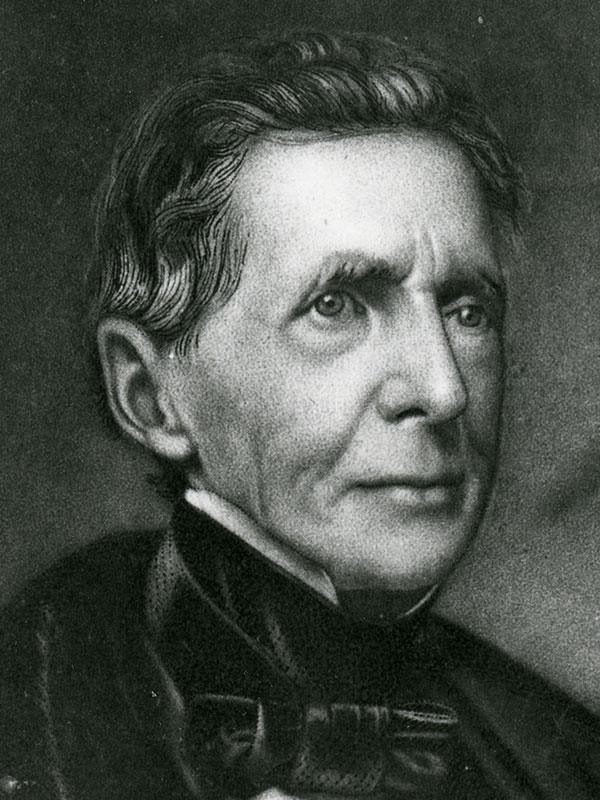
Dr. James Jackson and Dr. John Collins Warren were among the foremost proponents of this plan. So committed were they to the idea that a general hospital in Boston was a necessity, the two physicians penned a letter in August 1810 to their rich and equally socially invested friends. The letter implored them to remember that “When in distress, every man becomes our neighbour.” In early 1811 the Massachusetts legislature granted a charter for the incorporation of Massachusetts General Hospital and fundraising proceeded, with donations ranging from 25 cents to $20,000, and including such unusual gifts as a 273-pound sow.
The War of 1812 delayed fundraising for several years, but in 1816 the Trustees of Massachusetts General Hospital bought and renovated an estate in Charlestown. This institution split off from the general hospital, and was focused solely on patients with mental health disorders. This facility became McLean Asylum, now McLean Hospital in Belmont.
The following year, a four-acre field in Boston’s West End known as Prince’s Pasture was acquired for construction of Massachusetts General Hospital. The original building, now known as the Bulfinch Building, opened its doors on Sept. 3, 1821, for admission of the first patient, a saddler with syphilis.
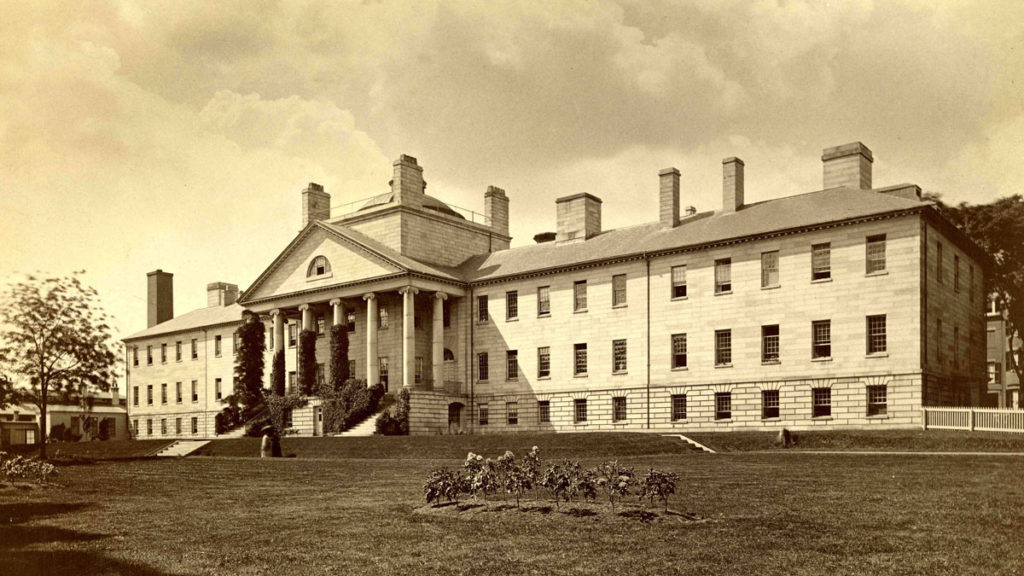
MGH was also created to serve as a teaching hospital for Harvard Medical School. MGH has since been the scene of more changes and advances in medicine than can displayed in the Russell Museum.
Among the highlights of MGH history:
- the first public demonstration of surgical anesthesia by local dentist William T.G. Morton and Dr. John Collins Warren (1846)
- the identification of appendicitis by Dr. Reginald Fitz (1886)
- the establishment of the first medical social service by Dr. Richard Cabot and Ida Cannon (1905)
- the first replantation of a severed arm by a surgical team led by Dr. Ronald Malt (1962)
- the first use of telemedicine, the practice of medicine over closed circuit television (1968)
- the development (along with researchers at MIT and the Shriners Burns Institute) of the first artificial skin made from living cells (1981)
Research at MGH
Research at MGH has been part of the hospital’s mission since its founding. With an annual research budget of approximately $900 million, MGH currently conducts the largest hospital-based research program in the United States. The program integrates the full spectrum of bench-to-bedside discovery, where researchers work alongside clinicians — in the lab, in clinical trials and folloiwng patients in long-term studies. Advances in recent years include:
- an MGH patient who became the first person in the world for whom immune system tolerance to a non-immune-matched kidney transplant was induced through a combined kidney and bone marrow transplant (2002)
- the invention of an optical imaging technique that can provide 3D microscopic views of the inner surfaces of blood vessels and gastrointestinal organs (2006)
- the development of early prototypes of a microchip-based device that can find a single cancer cell among billions of cells in a blood sample (2010)
- the collaborative development of a brain-computer interface that allows people with tetraplegia (paralysis of all four limbs) to control a robot arm with their thoughts (2012)
- the first genitourinary vascularized composite allograft (GUVCA) transplant surgery — also referred to as a penile transplant — performed for the first time in the U.S. (2016)
The Promise of Innovation
From the first successful demonstration of surgical anesthesia on October 16, 1846, MGH has been immersed in improving patient care through innovations large and small, practical and clinical, that transform the lives of patients and the practice of medicine. From the simple — recognizing the impact patients’ living conditions can have on their recovery (1821) — to the complex — developing a imaging modality that can watch the brain working in real-time (1991) — to the futuristic — fabricating organs from one’s own cells (2017) — MGH innovation takes many forms.
MGH has several centers that focus on collaborative bench-to-bedside innovation.
- Division of Clinical Research
- The Massachusetts General Hospital Research Institute
- Translational Research Center

